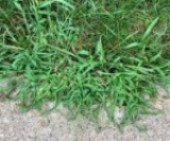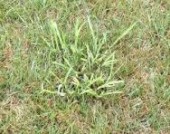Dog Gone Weeds

If there is one thing I have learned in any type of gardening or landscaping is to get to the weeds before they go to seed. If you remove the weeds before they are fully mature and dropping seeds, you won’t have a weed problem. Weeds need to be addressed in late winter early spring before they come to seed, and throughout the growing season. Staying up on weeds can be overwhelming at times, but once you get them under control and maintained on a regular basis, it will be much less tasking.
Learn How to Identify WeedsYou need to know the invasive weeds that need removal such as (Crabgrass, Canada Thistle, Hogweed, Mugwort, Garlic Mustard, Japanese Knotweed, Gooseneck Loosestrife, Bindweed, Wild Grapevine, Pokeweed, etc.). Take photos of your weeds and you can identify them online, or take them to your local garden lawn care center for expert advice.
I'm Diggin Them WeedsHand pulling weeds can be an effective way to remove them, but it's time-consuming and labor-intensive. Here are some tips for hand pulling weeds.
Pull at the base: Grab the weed as close to the ground as possible and pull straight up. This ensures that you remove the entire plant, including the root, which is the most important part.
Pull when young: Young weeds have smaller roots, making them easier to pull.
Loosen the soil: Watering the area before pulling can help loosen the soil and make it easier to remove the weed.
Pull slowly: Pulling too fast can break the plant and make it harder to remove.
Check for remaining roots: After pulling, make sure the entire root has been removed.
Five notorious lawn weeds "Wanted dead not alive"
Crab Grass - Dallis Grass - Goose Grass - Johnson Grass - Kikuyu Grass
Use The Right Tools
Wear gloves: Gloves can protect your hands from scratches and stings from prickly weeds. Thick leather or suede gloves can also protect against sunburn, blistering, and insect bites.
Use tools: Hook neck tools, angled hand hoes, ergonomic weed pullers, and hand shovels can help you dig out weeds that are in between other plants or deeply rooted. The use of gardening chairs, or mats can save of the legs and knees.
Take breaks: Weeding can be backbreaking work, so take rest breaks and stay hydrated.
Applying a layer of mulch 2-3 inches thick after planting helps with weed control by blocking light and prevents weed seeds from germinating. If you want to keep your weeds from sprouting try applying a pre-emergent to your lawn or garden in the early spring or late winter.
Disclaimer: All the information on this website is published in good faith and for general information purpose only. gardencare1.com does not make any warranties about the completeness, reliability and accuracy of this information. Any action you take upon the information you find on this website (gardencare1.com), is strictly at your own risk. gardencare1.com will not be liable for any losses and/or damages in connection with the use of our website.








